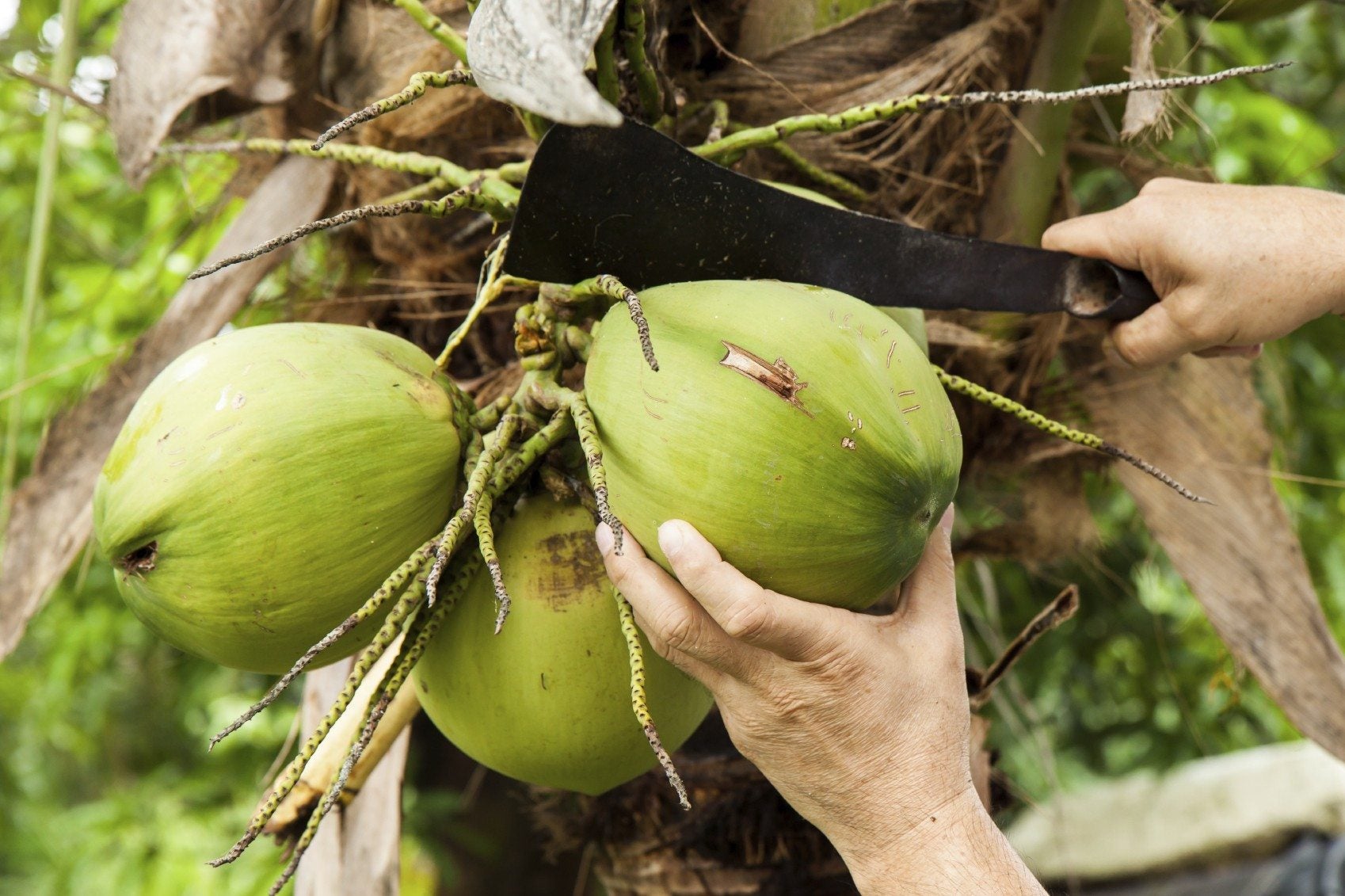
Coconuts reside in the palm (Arecaceae) family, which contains about 4,000 species. The origin of these palms is somewhat of a mystery but is widespread throughout the tropics, and primarily found on sandy beaches. If you live in a suitably tropical region (USDA zones 10-11), you may be lucky enough to have a coconut in your landscape. The questions then arise, when are coconuts ripe and how to pick coconuts from trees? Read on to find out all about harvesting coconuts.
The Harvesting of Coconut Trees
Coconut is the most economically important of the palm family, and is grown as both a food crop as well as an ornamental.
- Coconuts are cultivated for their meat, or copra, which is pressed to release oil. The residual cake is then used to feed livestock.
- Coconut oil was the leading vegetable oil in use until 1962 when it was bypassed in popularity by soybean oil.
- Coir, the fiber from the husk, will be familiar to gardeners and is used in potting mix, for plant liners, and as packing material, mulch, rope, fuel, and matting.
- The nut also provides coconut water, of which much has been made of late.
Most commercially grown coconuts are grown by small landowners, unlike other tropical fruits, which are grown on plantations. The harvesting of coconuts occurs on these commercial farms by either climbing the tree using a rope or with the assistance of a power operated ladder. The fruit is then tapped with a knife to test for maturity. If the coconuts seem ready for harvest, the stalk is cut down and dropped to the ground or lowered using a rope.
So how about the harvesting of coconut trees for the home grower? It would be impractical to bring in a cherry picker and many of us lack the fortitude to shimmy up a tree with only a rope. Luckily, there are dwarf varieties of coconuts that grow to less dizzying heights. So how do you know when the coconuts are ripe and do coconuts ripen after they are picked?
How to Pick Coconuts from Trees
A little about the maturation of the fruit is in order before even discussing harvesting your coconuts. Coconuts take around one year to ripen fully. Several coconuts grow together in a bunch and they ripen about the same time. If you want to harvest the fruit for the coconut water, the fruit is ready six to seven months after emergence. If you want to wait for the delicious meat, you need to wait for another five to six months.
Along with the timing, color is also an indicator of ripeness. Mature coconuts are brown, while immature fruit is bright green. As the coconut matures, the amount of coconut water is replaced as the meat hardens. Of course, this brings us to the question of whether coconuts ripen after they are picked. No, but that doesn’t necessarily mean they are unusable.
If the fruit is green and has been maturing for six or seven months, you can always crack it open and drink the delicious coconut “milk.” You can also assess fruit that has dropped to the ground for ripeness by shaking it. Not every fruit that drops to the ground is completely ripe.
Sign up for the Gardening Know How newsletter today and receive a free copy of our e-book "How to Grow Delicious Tomatoes".
Again, fully ripened fruit is filled with meat, so you should hear no sloshing of the coconut water if it is completely ripe. If you want to eat the coconut meat when it soft and can be eaten with a spoon, you will hear some sounds of liquid when you shake the nut, but the sound will be muted since a layer of meat has developed.
Also, tap on the exterior of the shell. If the nut sounds hollow, you have a mature fruit. So, back to harvesting your coconut. If the tree is tall, a pole pruner may be of assistance. If you aren’t scared of heights, a ladder is certainly a way to get to the coconuts.
If the tree is small or has bent from the weight of the nuts, you may be able to reach them easily and clip them from the palm using sharp pruning shears. Lastly, although we previously mentioned that all fallen coconuts are not ripe, they usually are. This is how the palm reproduces, by dropping nuts that will eventually become new trees. Dropped nuts are certainly the easiest way to get a coconut, but can also be hazardous; a tree that is dropping nuts could also drop one on you.

Amy Grant has been gardening for 30 years and writing for 15. A professional chef and caterer, Amy's area of expertise is culinary gardening.
